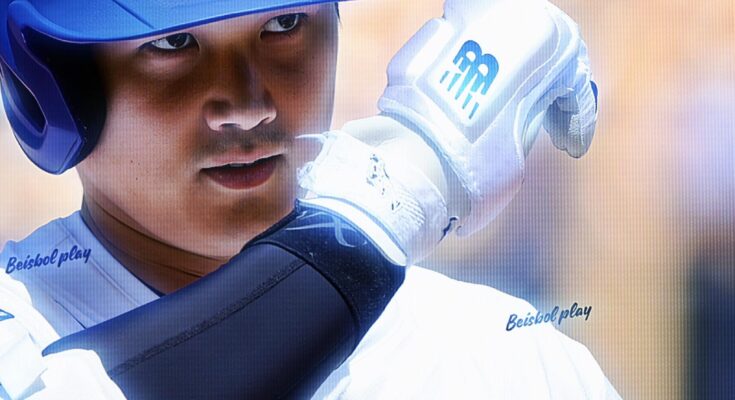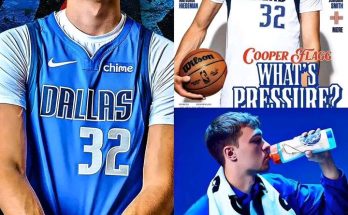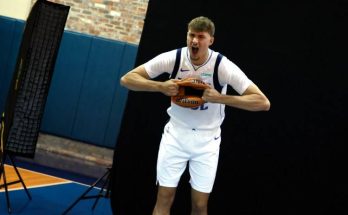Shohei Ohtani: A Legend of Two Leagues – Too Many Titles, Too Much Greatness
In the long and storied history of baseball, few players have transcended national borders, positional limitations, and statistical expectations quite like Shohei Ohtani. Nicknamed “Shotime” in the United States and often referred to as the “Japanese Babe Ruth,” Ohtani has achieved an unprecedented level of dominance in both the Nippon Professional Baseball (NPB) and Major League Baseball (MLB). When people say he has won “too many” titles, it’s a tongue-in-cheek acknowledgment that his accomplishments are so voluminous, so frequent, and so spectacular that they defy comparison. From MVPs to All-Star nods, from pitching gems to tape-measure home runs, Ohtani’s trophy case is not just full—it’s overflowing.
This essay examines Ohtani’s career in both Japan and the United States, unpacking his many titles and accolades and exploring the unique journey that allowed him to become the most dominant two-way player in modern baseball history.
Shohei Ohtani was born on July 5, 1994, in Oshu, Iwate Prefecture, Japan. A gifted athlete from a young age, Ohtani was already throwing fastballs at 99 mph (160 km/h) in high school—something nearly unheard of in Japan’s amateur baseball system. Rather than jump directly to MLB, Ohtani was drafted in 2012 by the Hokkaido Nippon-Ham Fighters of the NPB, who made the bold promise that he could pursue a two-way career. It was a gamble, but it paid off.
Ohtani made his debut in 2013 at the age of 18. Over the next five years in the NPB, he didn’t just dabble in both hitting and pitching—he dominated in both. As a pitcher, he posted a 2.52 ERA with 624 strikeouts in 543 innings. As a hitter, he slashed .286/.358/.500 with 48 home runs and 166 RBIs in 403 games. He routinely threw 100 mph fastballs and hit balls over 500 feet. Japanese fans were in awe. Analysts were in disbelief. He wasn’t just good—he was historically great.
Ohtani’s success in the NPB earned him numerous individual and team honors. His most significant title came in 2016, when he helped lead the Fighters to a Japan Series championship. That season was magical: Ohtani went 10-4 with a 1.86 ERA and 174 strikeouts in just 140 innings. He also hit .322 with 22 home runs in only 104 games as a designated hitter. For his two-way brilliance, he was awarded the Pacific League MVP.
In the same season, Ohtani was named to the NPB Best Nine as both a pitcher and a DH—a rare and extraordinary feat. He also won the Pacific League Pitcher Best ERA award, the Designated Hitter award, and was selected for the NPB All-Star game multiple times. His performances at the plate and on the mound stunned Japanese baseball purists who had long insisted that two-way players could never succeed at the professional level.
Simply put, Ohtani had done it all in Japan. He’d won too many accolades, too many MVPs, and too many All-Star selections for a player his age. He had outgrown the NPB. The only mountain left to climb was in the West: Major League Baseball.
In December 2017, Ohtani signed with the Los Angeles Angels, choosing them over more lucrative and high-profile franchises like the Yankees and Dodgers. Despite the doubts of MLB scouts—many of whom questioned whether his body could handle the rigors of playing both ways—Ohtani was determined to prove he could dominate on both sides of the ball, just as he had in Japan.
His MLB debut in 2018 was a resounding success. In his rookie season, he posted a 3.31 ERA with 63 strikeouts in 51.2 innings and hit .285 with 22 home runs and 61 RBIs. He became the first player in nearly a century to hit 20+ homers and pitch 50+ innings in the same season. He was awarded the American League Rookie of the Year, firmly cementing his status as a generational talent.
By 2021, Ohtani had fully realized his potential. That season, he delivered one of the greatest individual performances in the history of baseball. As a pitcher, he went 9-2 with a 3.18 ERA and 156 strikeouts. As a hitter, he smashed 46 home runs, drove in 100 RBIs, stole 26 bases, and led the league in slugging percentage. For these efforts, he was unanimously awarded the 2021 American League MVP—the first player to do so while regularly pitching and hitting.
But the titles didn’t stop there. He was named an All-Star as both a hitter and pitcher, started the All-Star Game in both roles, won the Silver Slugger Award as a DH, and received the Commissioner’s Historic Achievement Award. It was not just a great season—it was a revolutionary one. MLB had never seen anything like it.
In 2023, Ohtani won his second AL MVP award, again unanimously, becoming the first player in history to achieve that feat twice without a single dissenting vote. He led the league in multiple categories including on-base percentage, slugging, and OPS. On the mound, he maintained a sub-3.00 ERA with over 150 strikeouts. Despite battling injuries, his numbers were jaw-dropping.
One of Ohtani’s most iconic moments came not in the MLB or NPB, but in the 2023 World Baseball Classic (WBC). Representing Team Japan, Ohtani dominated throughout the tournament both as a pitcher and hitter. In the championship game against the United States, he closed the ninth inning in dramatic fashion—striking out his Angels teammate Mike Trout with a blazing fastball.
That strikeout sealed Japan’s victory and earned Ohtani the WBC MVP award. It was a poetic moment—Japan’s greatest baseball export defeating America’s greatest baseball star to win an international title. It showcased Ohtani not just as a club legend, but as a global ambassador for the sport.
In 2024, Shohei Ohtani signed a historic 10-year, $700 million deal with the Los Angeles Dodgers—the largest contract in professional sports history. While many athletes decline after signing mega-deals, Ohtani continued to produce at elite levels. Though he was limited to hitting for part of the 2024 season due to injury, he still delivered MVP-caliber performances at the plate, and his return to pitching in 2025 reignited conversations about whether he’s the greatest talent baseball has ever seen.
By 2025, Ohtani had accumulated:
- 2x AL MVP (2021, 2023)
- AL Rookie of the Year (2018)
- NPB Pacific League MVP (2016)
- Japan Series Champion (2016)
- Multiple All-Star selections (MLB and NPB)
- Silver Slugger Awards
- WBC MVP (2023)
- NPB Best Nine (as both pitcher and DH)
- Historic achievement awards in both leagues
Add in his cultural impact—global jersey sales, international endorsements, and media coverage—and it becomes clear: Ohtani isn’t just a star. He’s a sports demigod.
Baseball has always valued specialization. Pitchers pitch. Hitters hit. The idea of doing both has been dismissed as unrealistic in the modern era—too hard, too risky, too inefficient. Shohei Ohtani shattered that dogma. He didn’t just flirt with two-way status; he thrived in it. In doing so, he expanded the imagination of what baseball can be.
In that sense, saying Ohtani has won “too many” titles is a nod to the fact that no list, no stat sheet, and no trophy shelf can fully contain his greatness. His career is an ongoing disruption of history.
As of mid-2025, Ohtani is still in his prime. He is on pace to eclipse 200 career home runs and 1,000 strikeouts as a pitcher—something no one in baseball history has come close to. He could become the first player inducted into both the Japanese Baseball Hall of Fame and the National Baseball Hall of Fame in Cooperstown.
He’s also inspiring a new generation of players—young athletes around the world who no longer have to choose between the mound and the batter’s box. Thanks to Ohtani, the game has expanded, evolved, and dared to dream.
Shohei Ohtani has won too many titles, but that’s



